Have you ever heard of the mystery around the origins of the sweet potato? Its full history is a puzzle even to the most well-versed historians.
Many agree that it spread across Europe – and eventually much of the world – through the Columbian exchange. However, India and Polynesia were ahead of the curve by hundreds of years, using sweet potato well before explorers returned from the New World bearing the sweet crops to Europe.
How did this superfood manage to spread across such vast distances – at least twice? Let's delve into the history of the sweet potato and its mysterious spread.
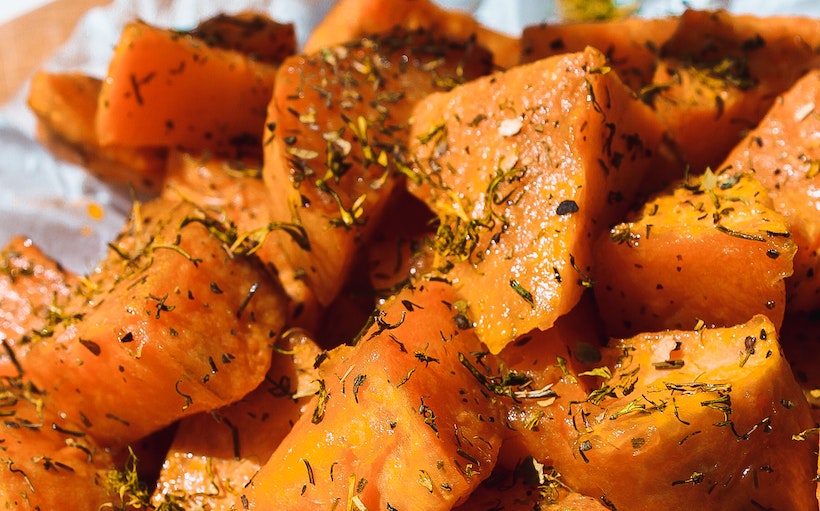
Despite the name, sweet potatoes (Ipomea batatas) aren't closely related to 'regular' potatoes. They both are in the order Solanae; however, potatoes are in the nightshade family while sweet potatoes belong to the Morning Glory family (Convolvulaceae).
You can spot these root crops from far away, with the most common varieties sporting copper skin and equally vibrant orange flesh. However, hundreds of varieties cultivated worldwide display other hues such as deep purple, reddish-purple, yellow, cream, and white.
Once cooked, sweet potatoes develop a mild, starchy, sweet flavor. When roasted or fried, the exterior becomes caramelized and crispy. When boiled or baked, the flesh turns soft and stringy.
Sweet potatoes thrive in areas with long hot summers. Depending on the variety, the growing period can last between three to six months.
They grow well in loamy, well-drained soil with a sandier composition. A looser soil with bigger pockets of air lets the roots grow and reach down.
The sweet potato is a high-carbohydrate, low-fat, and fiber-rich food. Many nutritionists value their high beta carotene (a precursor of vitamin A), vitamin C, and potassium content. The food is also a decent source of vitamin B5, vitamin B6, vitamin E, and manganese.
Some variants come with unique benefits. For instance, purple-fleshed sweet potatoes derive their beautiful color from natural pigments called anthocyanins. Many studies suggest that these substances have anti-bacterial and anti-inflammatory properties, among other benefits.
Like other root crops, sweet potatoes have a high calorie per acre growth ratio compared to grains. As such, many developing countries take advantage of this fast-growing, nutrient-rich superfood to feed much of their population.
The history of the sweet potato dates back tens of thousands of years – but its name doesn't.
The Spaniards, who introduced the sweet potato to Europe in the late 1490s, called it "patata" (or potato in English). It was a combination of the indigenous Taíno word "batata" and the Quecha word "papa."
It wasn't until the 1740s that the "sweet" part was added by American colonists to distinguish it from the popular Irish potato.
Today, many well-known organizations, both national and international, advocate for a one-word name – sweetpotato – to emphasize the plant's unique genetics and to further differentiate it from similar root crops.
Sweet potatoes and yams often are mistaken for each other due to their similar appearance, but a true yam comes from the lily family. (Oh, and it tastes quite different.)
Early American farmers called softer sweet potato varieties "yams" to distinguish them from their firmer sweet potato counterparts. Another theory suggests [PDF] native African slaves in the Southern Colonies lent the word "yam" to denote the sweet potato's similarities to the yams back home.
Often in the United States, 'yams' and sweet potatoes are interchangeable, but an actual yam is a different tuber altogether.
The sweet potato's versatility means that you can use it for both sweet and savory dishes.
Cooked together with hearty casseroles, fried into crispy chips or fries, or eaten at Thanksgiving with marshmallows are just a few of the endless ways you can incorporate this superfood into your diet.
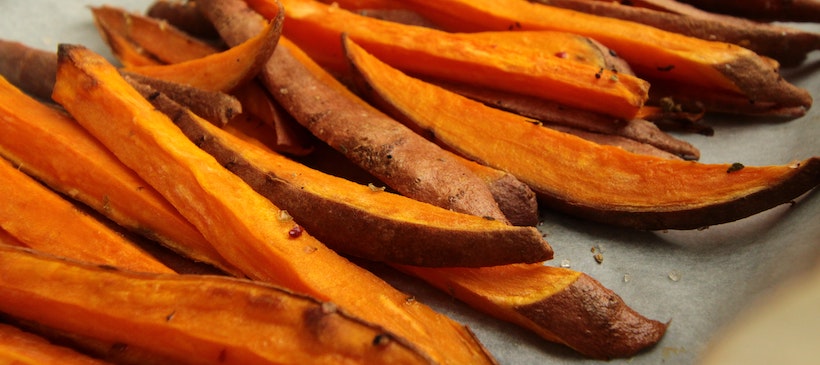
The sweet potato's oldest known ancestor is Ipomoea trifida, a morning glory species native to South America, Mexico, and the Caribbean. l. trifida only grows an inedible pencil-thick root, quite a far cry from the tasty tuber we know and love!
The 'modern' sweet potato likely originated between Mexico's Yucatán Peninsula and Venezuela's Orinoco River. The crop most likely spread throughout South and Central America through human influence.
While it's a commonly-held belief that sweet potatoes came from several regions in America, the sweet potato's full history is not clear cut. A recent study suggests that India might have an origin claim, as well. Researchers from India identified 57-million-year-old morning glory family plant fossils. However, it's important to note that hundreds of other plant varieties belong to this family, not just the sweet potato – the wild precursor to the sweet potato almost certainly arose in Central America.
Researchers found that the oldest evidence of sweet potato cultivation in Peru, dating back 5000 years ago. Further, they found fossilized remains of the plant in the Andes around 8,000 years old.
Sweet potatoes certainly made their mark in Peru, as scientists keep discovering additional evidence of their presence in the area across different periods. They found numerous root crops that date back between 1400 B.C.E. and 1300 B.C.E. as well as between 1300 B.C.E. and 1175 B.C.E.
This combined evidence gives us an approximate date of at least 2000 B.C.E. for the cultivated plant's presence in America. By the time European colonizers reached the New World's shores near the end of the 15th century, sweet potatoes were already a well-established food plant in Central and South America.
In the 18th century, Captain Cook found sweet potatoes growing across several Polynesian islands 4000 miles away from the plant's assumed place of origin. How can this be?
You might assume that they came after the Age of Discovery, where Spanish colonizers introduced the crop to various parts of the world, such as the Philippines. The Polynesian islanders could have gotten the plant from these once-colonized lands – but evidence negates that idea.
Archeologists discovered sweet potato remains in one Polynesian island that date back over 700 years, well before Columbus's famed voyages! Since these findings, scientists have formulated several theories about how this mysterious crop managed to set up shop on far-off shores.
Genetic studies show that native Americans might have brought and planted this crop during this period as they traveled to different islands. It gradually spread across the Pacific from America to Polynesia, New Guinea, New Zealand, and eastern Indonesia.
One popular (if controversial!) theory on the spread of the sweet potato states that it came from America to the islands without human aid. Birds could have carried pieces of the crop during their yearly migration, storms could have tossed them about, or sweet potatoes could have floated through the vast sea and, with great fortune, managed to reach land.
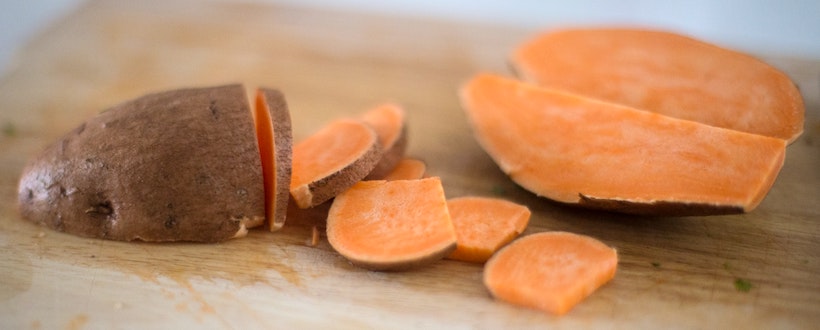
Famed Spanish explorer Christopher Columbus discovered sweet potatoes during his excursions in the New World in 1492. He brought the plant back to his homeland on his fourth voyage, along with other American commodities.
The Spaniards loved them so much that they brought sweet potatoes with them on future journeys. They helped spread the crop to China in the 16th century and throughout South America, Africa, and Asia during the 17th and 18th centuries.
Thanks to the sweet potato's pleasant taste and texture, its use soon spread across Europe. People experimented with the crop's starch and flour, leading to delicious bread, puddings, and jellies based on the tuber.
Each culture brought something new to the table. For example, the English infused it wine, roasted it with oil, and boiled it with prunes.
The earliest records of American settlers cultivating sweet potatoes were in Virginia in 1648 and New England in 1764. The people who resided in the Northern regions of America preferred the "dry-fleshed" variants of sweet potato. The starchy, less sweet quality of these roots made them more suitable for boiling.
On the other hand, Southerners preferred "moist-fleshed" sweet potatoes. Since they mostly baked their sweet potatoes, they sought out variants that became tender after being roasted in a fire or cooked in an oven.
Oddly enough, "dry-fleshed" sweet potatoes hold more water than their "moist-fleshed" counterparts!
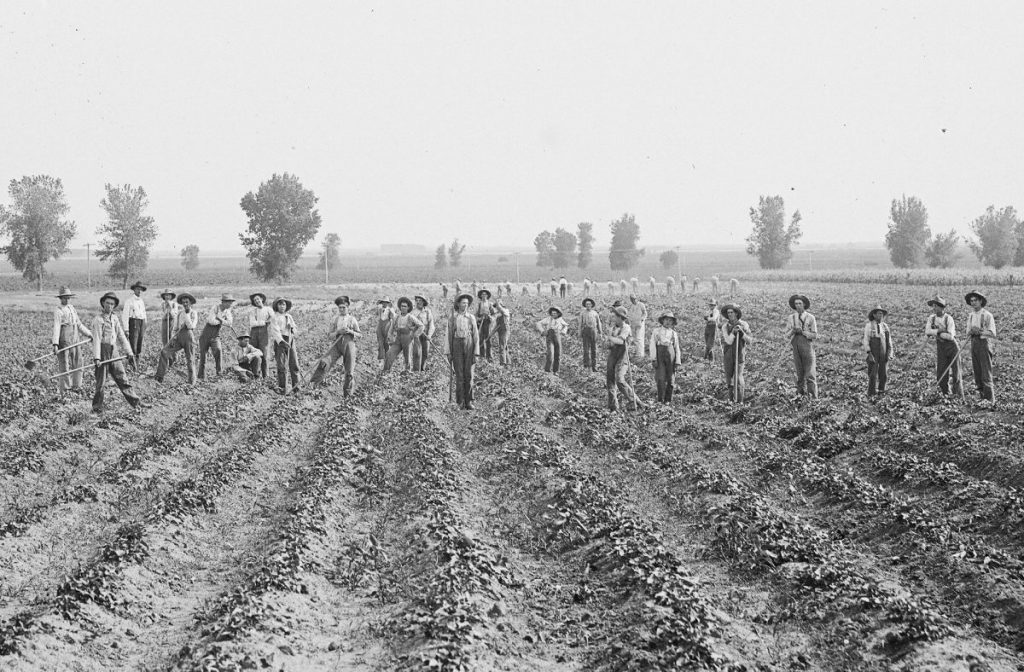
The use of sweet potatoes in America continued to flourish as the years passed. One popular Southern dish was the pone; a pudding served as a dessert or a side dish.
The crop even became a staple in Thanksgiving, one of our most popular holidays. The tradition started as early as 1887. Sarah Josepha Hale, the famous anti-slavery writer oft-regarded as the godmother of Thanksgiving, mentioned sweet potato pies in one magazine publication. (She also figures into the history of pumpkin in America and pumpkin pie.)
What about the beloved sweet potato and marshmallow casserole?
An early marshmallow-and-sweet-potato dish made it into the seminal American cookbook, Amelia Simmons' American Cookery. The first modern variant of the dessert appeared in 1917, when the Angelus Marshmallows company released recipe booklets that utilized the sweet potato with a marshmallow history.
Farmers throughout the globe produce over between 90 to 100 million metric tons of sweet potatoes every year, most of which come from developing countries.
According to the International Potato Center, sweet potatoes are the sixth most essential food crop, after cassava, corn, potatoes, wheat, and rice. In developing countries, it moves up to the fifth spot thanks to its nutritional, carb-rich composition.
Despite its Latin American origin, Asia has become the prime source of sweet potatoes, producing over 90 million tons each year. This is mostly thanks to China, the biggest producer and consumer of sweet potatoes worldwide. China uses the crop as a staple food, animal feed, or to create other products like flour and starch.
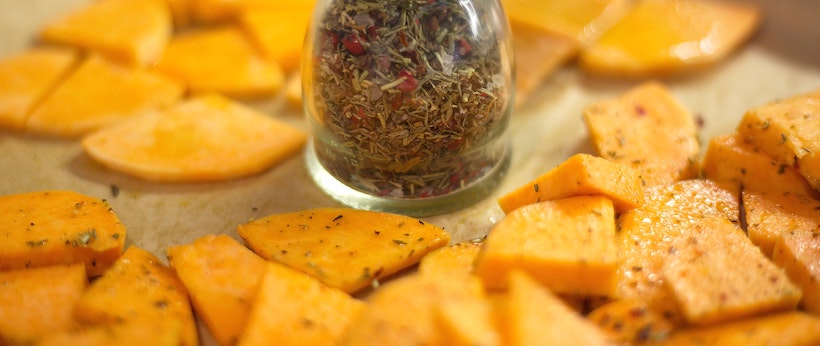
Whether you're eating sweet potato at the Thanksgiving table or enjoying it for a random meal (possibly with marshmallows...), it's a fascinating tuber. It's made at least journies over the oceans – and one of them may not even have been human-powered. And through all of those paths, it made it to your plate.
So keep the amazing history of the sweet potato in mind the next time you take a bite. It's an amazing food, and I'm so happy we get to enjoy it!
How did they become a staple in the African American diet?
when did sweet potato enter india
Great article. Lots of details and some great information.
Thank you for taking such care in writing.